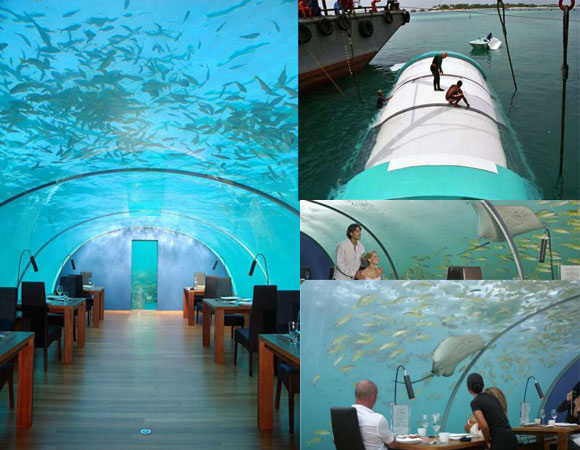Ithaa, positioned five metres (15 feet) below sea level is the world’s leading undersea restaurant enclosed by a coral reef, at the Conrad Maldives Rangali Island in Rangalifinolhu, Maldives. Synonymous to Pearl in Dhivehi, the restaurant is sheathed in R-Cast acrylic, which is a translucent acrylic roof providing 270° panoramic view to its patrons. Served with a Maldavian-Western Fusion menu with a price range varying from $120-$250, counted 14 people can dine in one go.
Designed and developed by a New Zealand-based design consultancy company M.J. Murphy Ltd, this $5 million restaurant was constructed in Singapore and was later shipped to the island on a colossal barge outfitted with a massive derrick to enable it dive in the sea. The thrilling experience starts right on the way as the unique wooden walkway directs you to reach the welcoming door of restaurant. Carsten Schieck, the GM commented on the usage of aquarium technology that serves diner face-to-face with the spectacular submarine surroundings of the Maldives.
Via Elite Choice



